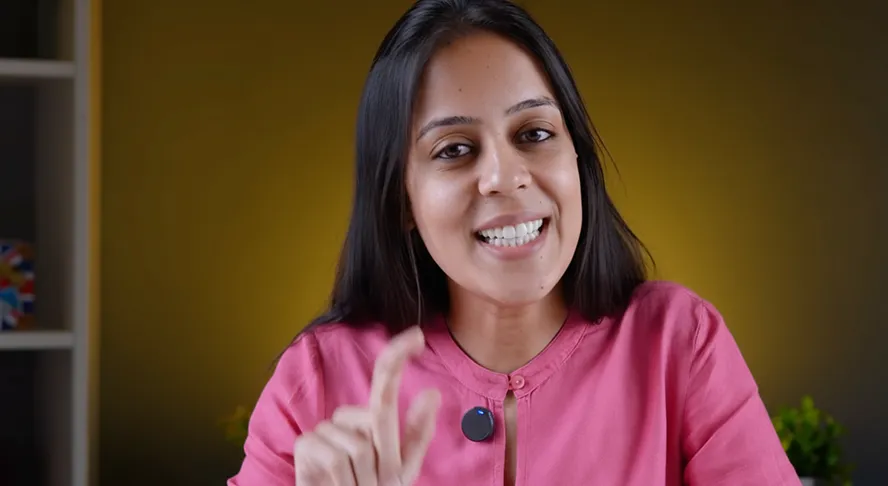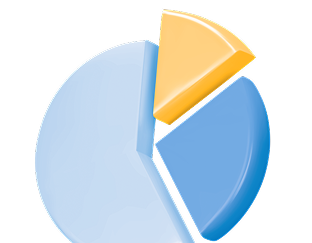Disclaimer The calculator alone is not sufficient and shouldn't be used for the development or implementation of an investment strategy. This tool is created to explain basic financial / investment related concepts to investors. The tool is created for helping the investor take an informed investment decision and is not an investment process in itself. Bajaj Finserv AMC has tied up with AdvisorKhoj for integrating the calculator to the website. Mutual Fund does not provide guaranteed returns. Also, there is no assurance about the accuracy of the calculator. Past performance may or may not be sustained in future, and the same may not provide a basis for comparison with other investments. Investors are advised to seek professional advice from financial, tax and legal advisor before investing in mutual funds.
Other Calculators
View AllEXPLORE OUR FUNDS
All Mutual Funds



















MORE ABOUT CALCULATORs
Compound interest means earning interest on both your original amount and the interest it earns over time. For example, if you invest Rs. 100 at 6% annual compound interest, you earn Rs. 6 in the first year and 6% on Rs. 106 in the second. Over time, this creates a snowball effect, your money grows faster as interest builds on interest. A mutual fund compounding calculator can show how this growth works.
A compound interest calculator helps you estimate how your money could grow over time through compounding. By entering details like your principal amount, interest rate, and compounding frequency, it shows how your investments can build upon themselves over the years. The compound calculator helps you understand how even small, consistent contributions can lead to significant growth in the long run.
However, investors should note that the compound interest calculator assumes a fixed rate of return for its estimates. For market-linked investments, returns may fluctuate, are not guaranteed, and depend on market conditions.
A compound interest calculator supports smarter financial planning in several ways:
- Accurate estimates: It quickly calculates potential growth, helping you gauge future investment values (actual returns may vary with market conditions).
- Simple to use: You can easily input details and understand complex projections.
- Compare scenarios: It lets you test different investment options, rates, and compounding periods.
- Better planning: It helps you visualise how your money could grow and plan realistic financial goals accordingly.
A compound interest calculator estimates how your investment may grow over time by factoring in your principal amount, interest rate, time horizon, and compounding frequency. It calculates interest on both the original amount and the accumulated interest, showing how compounding accelerates growth. You can adjust inputs to compare scenarios and plan better.
Compounding applies to many investments like savings accounts, fixed deposits, and mutual funds. In mutual funds, reinvested returns generate additional gains over time. A mutual fund compounding calculator helps you estimate this potential growth
The compound calculator utilizes a predefined formula to calculate the future value (A) using the provided inputs. The compound interest formula commonly used is:
A = P (1 + R / n) ^ (nT)
Where:
A = Future value of the investment
P = Principal amount
R = Interest rate (as a decimal)
n = Number of compounding periods per year
T = Time period (in years)
It calculates how your investment grows by reinvesting earnings over time. For example, investing ₹50,000 at 7% annual compound interest for 10 years can grow to about ₹98,358, showing the effect of compounding.
For instance, say you invest ₹50,000 in a financial product that offers an annual return of 7%, and you plan to stay invested for 10 years. If you don’t withdraw your earnings, the interest is reinvested each year—this is compounding.
At the end of the decade, your investments can potentially grow to approximately ₹98,358. Here, ₹48,358 is the interest earned on both your original amount and the accumulated returns over time. This example demonstrates how the power of compounding can work on your investments in the long run. The more time you give your investments, the more you increase its potential.
Using a compound calculator can help you understand this in an easier manner although it is important to note that the actual results may vary based on the fund you choose, your investment horizon and the market performance.
| Principal amount | Investment Horizon | Final Corpus |
|---|---|---|
| 1 lakh | 1 year | ₹ 1,11,000 |
| 1 lakh | 2 year | ₹ 1,23,210 |
| 1 lakh | 3 year | ₹ 1,36,763 |
| 1 lakh | 5 year | ₹ 1,68,506 |
| 1 lakh | 10 year | ₹ 2,83,942 |
You benefit from the calculator by not having to perform manual calculations because it provides immediate estimation results. Mutual fund returns exist on a range of possibilities because they do not guarantee or always match investor predictions.
The analysis uses annual compounding as its time basis. You can calculate expected output using a daily compound interest calculator with any investment channel that involves daily compounding.
When you get compounded returns, it means that you can earn returns not only on your initial investments but also on the potential returns your investments generate over time. Each deposit you make has its own potential to earn returns and compound over time.
A combination of regular deposits with the power of compounding can be beneficial for long-term goals like retirement or child education. It can offer relatively steady potential growth even with modest investment amounts. The key here is the consistency and discipline which means the sooner you start, the more time you can give your investment to compound in the long run.
You can use a compounding calculator to estimate how your investments can grow over time. While returns depend on market performance and are not assured, disciplined investing can support long-term financial planning.
Several factors can influence the impact of compound interest on your money. These include:
- Investment horizon: The longer you stay invested, the more your money can potentially compound. Even small investments can grow potentially significantly if given enough years. Moreover, the pace of compounded growth accelerates with time. So, time plays a very important role on the impact of compounding.
- Interest rate or rate of return: A higher interest rate translates to more growth. About mutual funds , returns are market-linked and can fluctuate significantly. A small difference can have a significant impact, especially in the long run.
- Compounding frequency: Interest that compounds more frequently (daily, monthly, or quarterly) grows faster than annual compounding. Mutual funds don’t have a fixed compounding schedule but benefit from reinvested gains, which amplify long-term growth potential.
- Principal amount: A larger initial investment or higher regular contributions increase the base on which compounding works, leading to higher potential returns.
Using Bajaj Finserv AMC compound interest calculator is simple:
- Begin by entering your current financial details – principal amount, interest rate, and the duration of investment.
- Choose the frequency at which interest is compounded – monthly, quarterly, annually.
- • Watch as the compound interest calculator unveils projections, illustrating how compounding can potentially boost your over the investment horizon.
Compound interest is essential for long-term financial planning due to its multiple valuable advantages. Compounding provides various advantages, which include:
- Potential for exponential growth: Witness your wealth potentially grow manifold over time as you earn gains on your previous returns.
- Long-term wealth creation: Optimize compounding to create a robust foundation for long-term financial success. The longer the investment horizon, the more powerful the effect of compounding multiplying gains can be.
- Inflation hedge: It can act as a hedge against inflation by potentially outpacing the rate of inflation, thereby preserving the purchasing power of your money.
- Financial discipline: Regular contributions to investments that benefit from compound interest promote financial discipline and responsible financial habits.
The following benefits become available to users through the Bajaj Finserv AMC compounding calculator:
- Strategic planning: Plan your investments strategically, considering the compounding frequency that aligns with your financial goals.
- Visualize growth: Get a clear visual representation of how compounding can impact your portfolio over different time frames.
- Goal alignment: Align your investment strategy with specific financial goals, adapting as your needs evolve.
Compounding frequency refers to how often interest is added to the principal amount. When interest is added at regular intervals, the updated amount becomes the base for calculating future interest.
Different financial products in India follow different compounding practices. Compounding frequencies may also differ from one product or another. Some examples are:
- Some savings accounts calculate interest on a daily balance and credit it periodically, often on a quarterly basis.
- Fixed Deposits (FDs) commonly use quarterly compounding, although some may offer monthly, half-yearly or annual compounding depending on the bank’s terms.
- Public Provident Fund (PPF) interest is compounded annually and credited at the end of the financial year.
- Recurring Deposits (RDs) usually follow quarterly compounding, like many FDs.
- Market-linked products such as mutual funds, ULIPs, and the National Pension System (NPS) do not use traditional compounding. Their values change based on market movements and are reflected in the daily Net Asset Value (NAV). However, over time, if potential returns are reinvested, they may continue to grow and achieve a compounding-like effect.
Each product’s structure and frequency influences how the value changes over time. Investors may choose suitable options based on their financial objectives and comfort with different types of products. You can use an online available compound interest calculator India to calculate your potential returns and plan your approach.
Simple interest is calculated only on the original principal, so the interest amount stays the same throughout the period.
Compound interest is calculated on the principal plus any accumulated interest, which means each calculation is based on a slightly higher amount.
The table below highlights the key differences between the two.
| Aspect | Simple interest | Compound interest |
|---|---|---|
| Calculation | Interest is calculated only on the principal | Interest is calculated on principal + accumulated interest |
| Growth | Linear growth | Exponential growth |
| Formula | I = PxRxT | A = P (1 + R / n) ^ (nT) |
| Effect of Time | Interest amount remains constant | Interest amount increases over time |
| Application | Commonly used for short-term loans or simple savings accounts | Commonly used for long-term investments and savings |
Compounding plays an important role in long-term financial planning because it helps your potentially money grow faster over time by adding interest to both the principal and previously earned interest.
- Small contributions may grow big
You don’t need a large starting amount to benefit from compounding. Even modest, consistent contributions may grow substantially over long periods. - Time strengthens the effect
The earlier you begin investing, the more time your money gets to potentially benefit from compounding. With time, the pace of compounding may pick-up, resulting in a snowball effect in the long run. - Helps manage the impact of inflation
Inflation reduces purchasing power. Compounding may help your investments grow at a pace that supports long-term goals and helps you stay aligned with rising costs over time. - Lowers the pressure on future contributions
Starting early spreads your investment journey over a longer period. This may reduce the amount you need to invest later, as early contributions have more time to potentially benefit from compounding.
FAQs
Compounding in finance is when the returns on an investment, such as interest or dividends, are reinvested to earn additional earnings over time.
Regular investment contributions enhance compounding in mutual funds by consistently adding to the invested amount, allowing for a larger principal amount to generate returns.
To benefit from compounding, it's essential to start investing early, stay invested for the long term, and reinvest your earnings rather than cashing them out. An SIP calculator can help you determine how much to invest regularly to reach your financial goals.
Compound interest allows investments to grow faster over time due to earning interest on interest.
Compounding power works by reinvesting earned interest, which in turn earns more interest over time.
These refer to how often interest is calculated and added to the principal amount in a year, monthly, quarterly, half-yearly or annually. The power of compounding calculator can help you see how this frequency affects your final amount.
Compounding daily generally results in more suitable returns because interest is calculated more frequently on the growing balance. To see the impact of the compounding intervals on an investment, you can use a regular compound interest calculator and a daily compound interest calculator to compare.
It accelerates the growth of investments by continually adding earned interest to the principal amount.
Compound interest investments are financial products that earn interest not only on the initial principal but also on the accumulated interest from previous periods. Some examples include savings accounts, fixed deposits, public provident funds, recurring deposits and National Pension Scheme. Mutual funds and equity funds also offer compounding benefits. However, it is not interest but the potential returns on an investment that can compound over time. A compound interest calculator India or mutual fund compound interest calculator can help you see the potential effect of compounding on your investments.
Compound interest tends to be more beneficial for long-term investing because it adds interest to both the principal and previously earned interest, helping your money grow over time. Simple interest is calculated only on the original amount, so the growth is linear and limited. For borrowing, however, simple interest tends to be more manageable since the total interest payable is lower.
The key difference between compound interest and simple interest is how the interest is calculated and applied over time. Simple interest is calculated only on the initial principal. So, the interest accrued remains the same each year. In contrast, compound interest is calculated on both the principal and the accumulated interest. This means that the base on which interest is calculated keeps increasing, resulting in faster growth over time.
The impact of compound interest on an investment depends upon several factors including time, interest rate, compounding frequency, principal amount and market performance (for investments like mutual funds).
Rate of Return (RoR) and Time-Weighted Return (TWR) are ways to assess investment performance over time. These are commonly used in portfolio tracking to understand potential growth, though methods may vary by platform or tool.
The effective annual interest rate reflects the actual return over a year, considering the effect of compounding. It may differ from the nominal rate which doesn’t account for inflation and taxes.
The frequency of compounding depends on the specific investment or product. Details are typically provided by the issuer or fund.
There’s usually no restriction on the number of times you can use the calculator. It’s a planning tool meant to help you explore different scenarios as many times as you require.
Your returns depend on the principal amount, interest rate, compounding frequency, and how long you stay invested.
A longer tenure gives the process of compounding more time to potentially work, allowing interest to accumulate on both the principal and previously earned interest. This can lead to higher growth over extended periods.






























